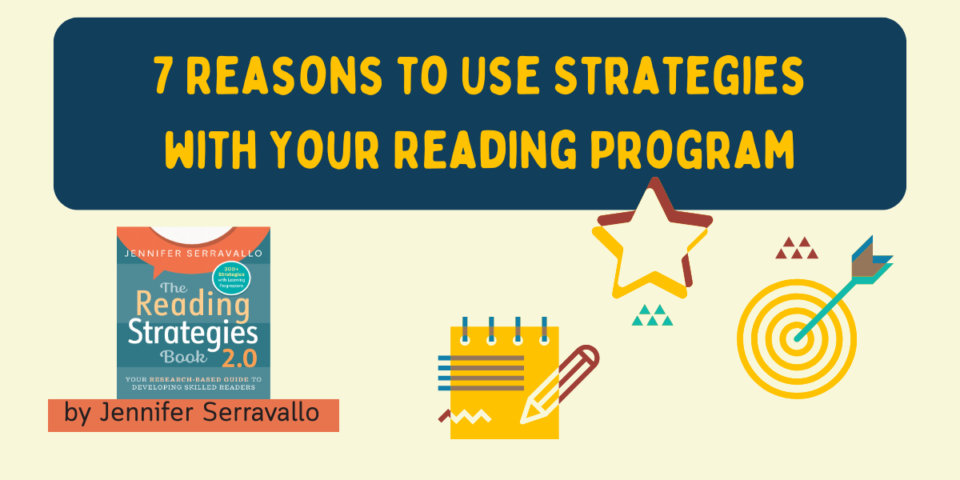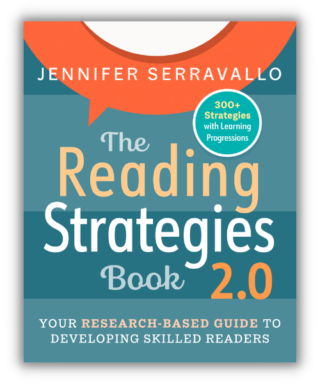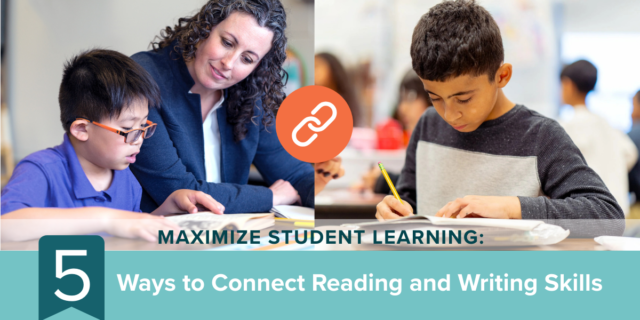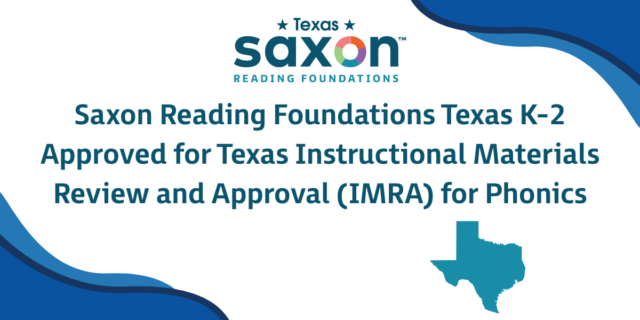
Strategies provide students with the how-tos as they are working on reading skills. A good strategy breaks something the reader is doing—such as finding the main idea, exploring new vocabulary, or looking for key details—into actionable, visible, and doable steps. In essence, strategies are a means to an end (increased knowledge, better understanding), not the end themselves.
Once a student has been explicitly taught a strategy, they can transfer that learning to other texts, using the same steps in new contexts. Eventually the strategy becomes automatic, and the reader isn’t even aware they are using it.
Every student at every level should be learning and using strategies, but most core reading programs either don’t include explicit strategies as steps, or call something a strategy that is actually a skill or a prompt (i.e. “Summarize the text”). So it’s essential that teachers revise their core program lessons to include explicit, step-by-step strategies. Here are a few of the reasons why including strategies is so essential:
Reason #1: Strategies have a substantial research base. There are decades of research supporting the use of strategies in the classroom. Strategies have been shown to positively impact student learning across grades, developmental levels, and abilities. Furthermore, research demonstrates that readers who learn to use strategies are more self-regulated, using what they know to drive improve their learning and performance. Read more about the research base behind the use of strategies in the classroom.
Reason #2: Strategies support all reading skills. Whether students are decoding a word, figuring out the theme, exploring figurative language, reading with expression, and so on, strategies delineate the steps students can follow to accomplish any reading task. In The Reading Strategies Book 2.0, I provide more than 300 ready-to-use strategies for 13 reading goals from accuracy and fluency to understanding character and key details to talking and writing about reading. Try a few strategies today in your classroom.
Reason #3: Strategies support explicit teaching. When you teach explicitly, you explain concepts, model skills, and provide scaffolding so students clearly understand the learning objective and how to achieve it. Strategies break down any reading task or learning objective into actionable, visible, and doable steps. Furthermore, strategies provide students with a learning hack that they can apply to future texts to ensure that they get the most out of their reading.
Reason #4: Strategies map to skill progressions. As readers become more proficient within a reading goal—accuracy, understanding text features, exploring character, or teasing out the main idea—they advance through the skill progression and need new strategies to help them master increasingly complex texts. For instance, in a vocabulary progression of skills, early readers might skip over or ignore unfamiliar words and need strategies to help them self-monitor and approach word learning with deliberation and curiosity. Advanced readers, who know how to figure out the meanings of unknown words, need strategies to help them consider an author’s word choice for a deeper interpretation. In The Reading Strategies Book 2.0—and only in this new edition—these progressions are included and aligned to every one of the 300 strategies, making selecting the right strategy to match a student’s need simple.
Reason #5: Strategies help students set a purpose for reading. Ever get to the middle of an article and forget why you were reading it? Without a defined purpose(s) for reading a text, students may not learn much. But if they go into a reading assignment knowing that they need to explore how a character’s actions inform the plot or that they need to mine the text features of a science article to tease out the main idea, they will steadily build their knowledge. Initially readers may need to concentrate on one purpose and one explicitly taught strategy. As they internalize strategies, they’ll be able to read with multiple purposes in mind.
Reason #6: Strategies support increased complexity. As students move through the year and from grade to grade, they will need different strategies to tackle increasingly complex ideas and texts. A strategy that helps a first grader determine the setting(s) of a story or article won’t help an eighth grader who is exploring how setting supports character development. Students who learn strategies from an early age know how to apply new strategies with intention and purpose and understand how to use strategies to achieve their goals.
Reason #7: Strategies support standards. Strategies support the explicit teaching of proficiencies outlined in standards. There are strategies that make it easier for students to learn how to decode, read with fluency, infer, synthesize, question, activate prior knowledge, write about reading, and more. As students need to build new skills and knowledge, they can draw upon the strategies they have been taught to help them tackle any text in any grade and in any genre.
Convinced? I’ve made it easy and quick for you to level-up your core reading program lesson plans to be more effective, efficient and engaging with explicit strategies. The organization and navigability of my updated The Reading Strategies Book 2.0 leverages skill progressions to make strategy selection easy, and I’ve made grade-by-grade, unit-by-unit correlation guides to commonly used reading programs free: Amplify CKLA, Expeditionary Learning (EL Education), HMH Into Reading, Wit & Wisdom and Wonders.
For supplemental resources connected to the text, and more information about inviting me or a colleague to join you in your school, visit www.jenniferserravallo.com.



